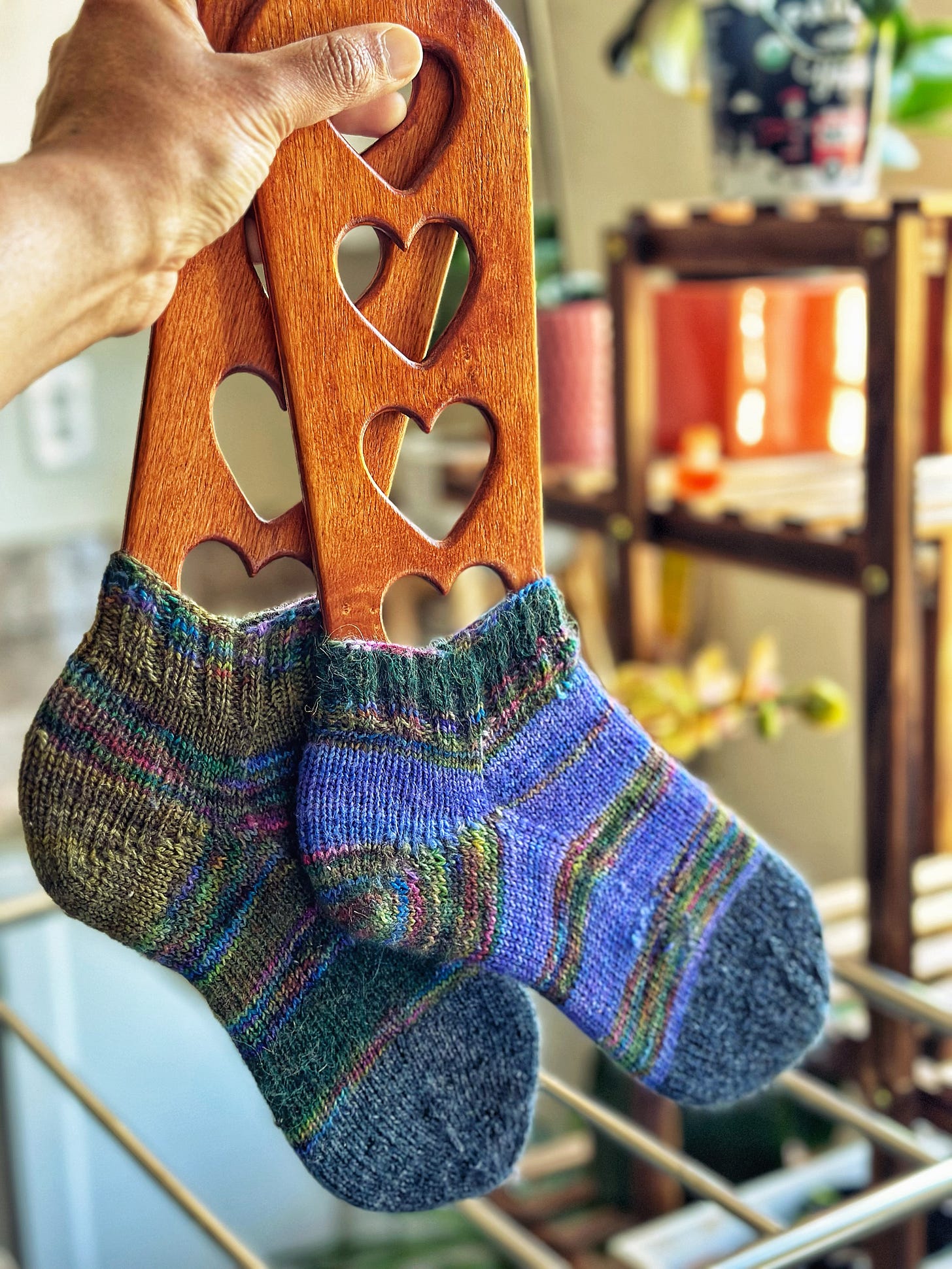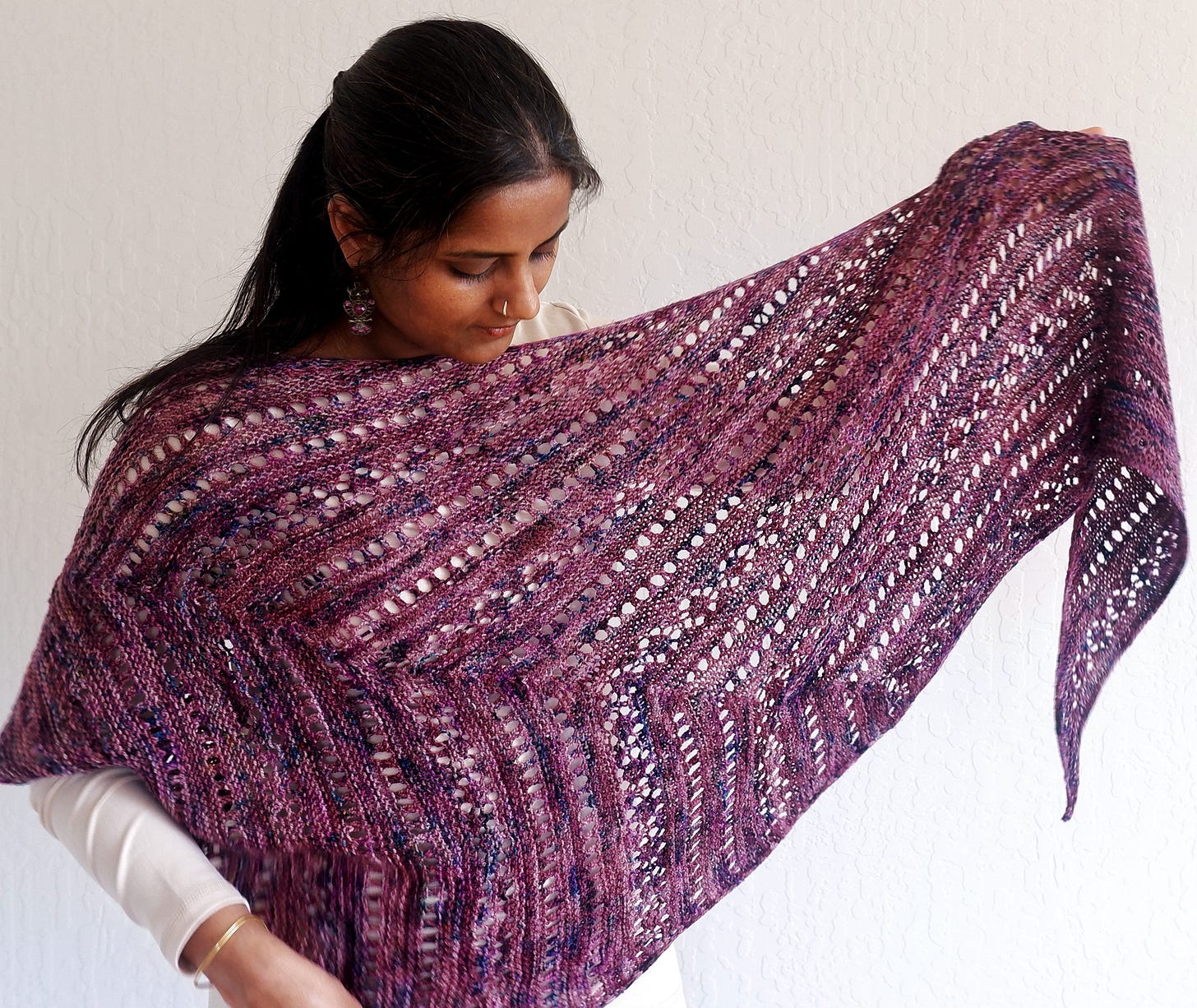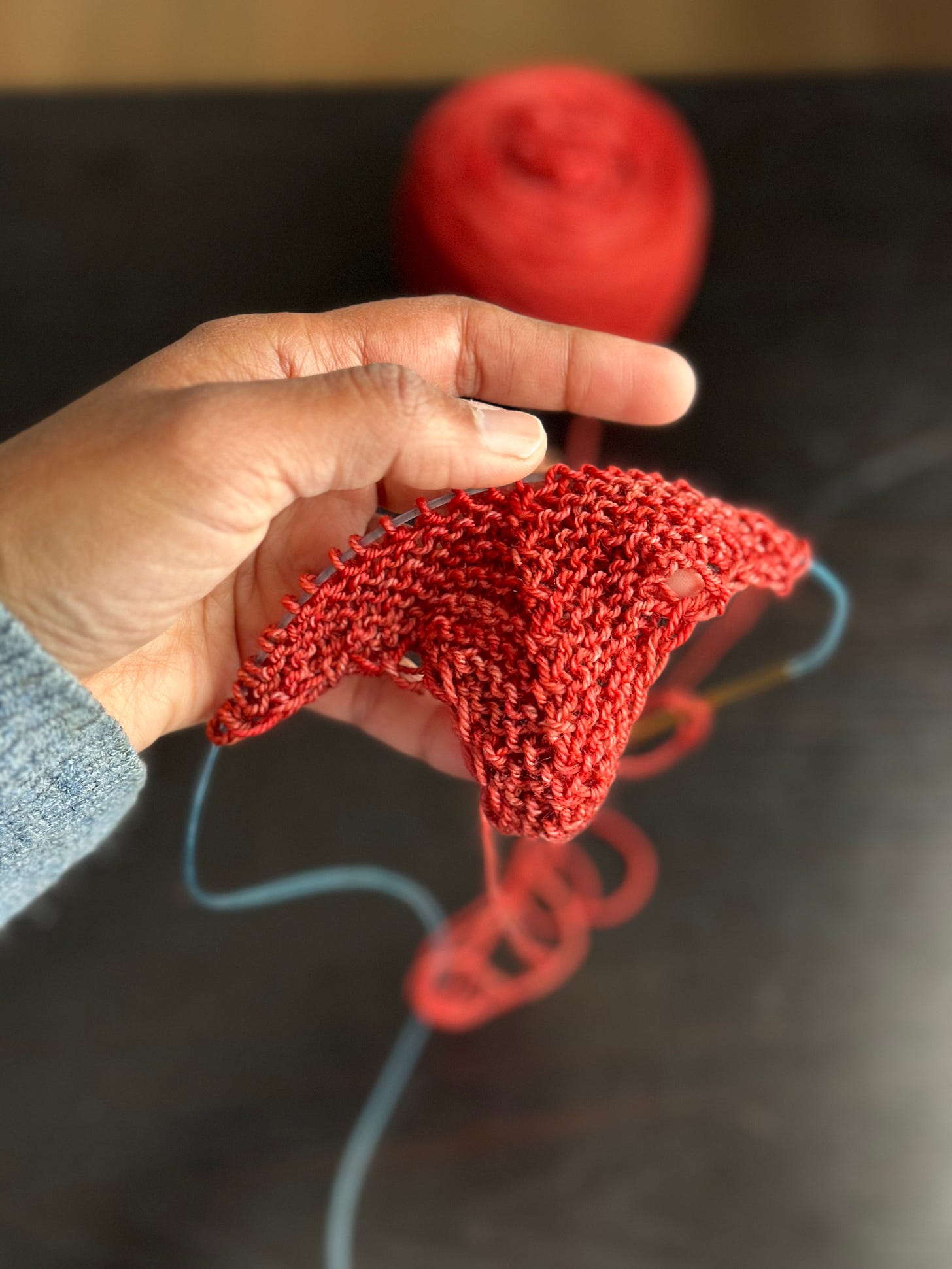Sock Knitting - The Learning Curve
Different phases in sock knitting journey, Nasha 2.0 testing call, other updates etc.
If you are an aspiring sock knitter, it can be rather intimidating to look at the pictures of those perfect hand knitted socks and sock WIPs on social media. The terminology and techniques involved can be quite confusing too. Unfortunately, social media also makes it appear like other people are churning out hand knit socks at lightning speed. 🧶
You too can knit the socks of your dreams, but it takes practice and a learning curve. Like in any pursuit, the learning curve 📈 needs to be honored, no matter what the social media stories tell you! In today's post I am sharing my understanding of what is involved in learning to knit socks. 🧦
For most of us, the very first pair of socks we knit are not going to fit. 😟 There are a few reasons for this. You may have acquired a lot of knitting skills, but socks expect you to push those skills even further.
For instance, you might know how to knit in the round, but socks would be your first small circumference project and can be extra fiddly. Laddering🪜 is a serious problem in small circumference knitting that needs attention and time to get resolved regardless of whatever method or tool you are trying to use.
You might be confident handling fingering weight yarn but socks would be the first project you are trying to use a 2.25 mm needle (or smaller!) with it.
Each part of a sock (cuff, leg, heel, foot and toe) can be constructed in a variety of different ways and the sock itself can be done toe-up or cuff-down. Learning to do even one of these combinations is going to take a while.
I find that it is easier to just focus on getting better at one or two aspects at a time. My suggestion is to start your sock knitting with something simple and slowly refine it to a recipe that produces the exact sock you want.
It might sound slow and boring. But when we stop worrying too much about getting perfect results right away, we usually begin to enjoy the process. Just like we used to do when we were little kids :)
Phase 1: Understand Construction
To begin with, just focus on understanding the anatomy of socks. Look up step-by-step tutorials for mini socks or baby socks and follow it as best as you could. These can be cute little decorations or may even fit a baby! You could even get away with using leftovers of DK or sport weight yarn for these projects.
Phase 2: Work on your gauge
Knit a few pairs of socks with sock yarn. There are a lot of options out there but commercial sock yarn that comes in variegated and self-striping colors are quite affordable and a lot of fun to work with.
Your first pair may not fit well but it serves two main purposes.
It gives you an idea about your sock knitting gauge. Do you like the fabric? Socks fit better and last longer when knit at a tight gauge. Once you know what your current gauge is, pay closer attention in your next project.You may need to switch needle sizes or try different tools and methods like magic loop, short circulars, two long circulars, dpns etc.
It won't be completely unusable. I have used my first few pairs as bed socks and in-house socks for a few years before I wore them out.
Phase 3: The Turning Point
Heel is the most complex part of understanding sock anatomy. Learning to turn a heel is considered to be the most magical knitting experience by many and is guaranteed to be the turning point in your sock knitting career. (Pun intended!)
Don't hesitate to try out different heel techniques. The traditional heel flap and gusset proved quite baggy around my heels. I tried out short row heels at some point and never looked back.
The rest of the sock parts are more or less tubes of different lengths which would need some experimentation but not as daunting. Toes come with their own construction but they are relatively easy.
Phase 4: Knit to fit, take notes.
Sock patterns are written for standard measurements and almost all of us need to customize it a bit for the best fit. Once you are happy with your heel fit, you can fine tune other aspects like length of the leg, length of foot, favorite toe shaping etc.
Take accurate measurements of your feet, 🦶measure gauge from your latest sock and aim for a reasonable amount of negative ease and a snug fit.Keep a journal and take detailed notes of your work. Note down your foot measurements and sock measurements that work well for you. 📝
E.g. How many rounds did you knit before starting your toe?
I knit socks for everyone in my family with short row heels but with different modifications to fit them well. I like to keep digital notes because it is easy to maintain and share with others. You can check my ravelry notebook here.
Such note keeping will help you pinpoint the fit problems you might have. There are many great resources on YouTube for solving a multitude of sock fit issues. Books like The Knitter's Book of Socks by Clara Parkes and Custom Socks by Kate Atherley are great reference material for understanding various aspects of sock knitting. 📚
Phase 5: Knit for joy
At some point, sock knitting will become your comfort project to carry around. 🧺 Explore the endless beautiful varieties of sock yarn out there! Or gather your scraps and go crazy! Knit for yourself and your loved ones. Knit for the sheer joy of it all.
Where do you find yourself in your sock knitting journey? 💗 If you are an experienced sock knitter, I would LOVE to hear about your first sock as well as your latest.
CRAFTDOODLING DESIGNS UPDATES
Nasha 2.0 is ready for testing. Currently, I can take 2-3 more testers. Please check the pattern testing call here and email me if interested with your Ravelry and Instagram ids.
I’ve started knitting another sample of the original one-skein version of Nasha Shawl as well. I’ll keep you posted on my progress.
OTHER THINGS YOU MIGHT LIKE
Reading updates📚
Finished reading
Slaughterhouse-Five - Kurt Vonnegut
Until next time,
Kavitha. ♡
Currently, this newsletter is free to subscribe. If you like my work, please consider these other ways to support:
Click the ❤️ at the bottom of this post. If you are reading from your email inbox, this will open substack in web browser. Please allow it to open and make sure you see the red heart.
Share your thoughts in comments. I am here for the conversations. I hope you are too!
Introduce this newsletter to a friend!
Buy my patterns. I hope you find something you like.
I accept any of these with immense gratitude. Thank you!






Good on you Kavitha for giving newbie sock knitters some encouragement!! As well as guidance for how to get the fit of their sock dreams! I have always been activated by a challenge. So, socks were a 'Got to try that!' soon after learning to k2p2.😃 Back in the day - that meant learning to use dpns (and then finding shorter dps and not being afraid of dropping stitches). And of course, I had to add the challenge of knitting a pair of argyles! Luckily I had some very good instructions, and my biggest challenge was getting comfortable with the needles and learning how to prevent laddering while keeping even tension. I do think making heavier weight socks are easier when learning to do these things. Now a days, I like to save old pairs of hand knit socks by saving the leg parts and remaking the lower foot part. It goes surprisingly fast by opening up a row a little above the ankle and threading the stitches on to your needles and reknitting a new foot! For fun I sometimes make the foot bright yellow or red because these colors seem to 'feel' warm. 😄
I adore your learning curve graphic! So clever and true. I'm about to dive into the world of sock knitting, and your post was timely and encouraging!